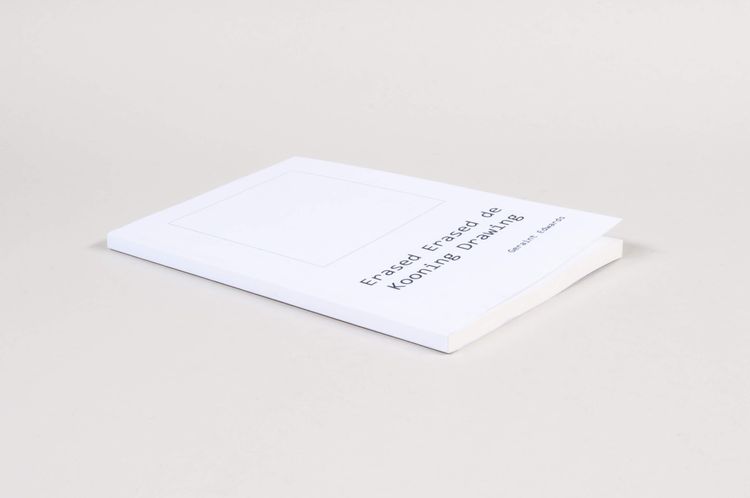Geraint Edwards’s Erased Erased de Kooning Drawing is a digital reenactment of Robert Rauschenberg’s Erased de Kooning Drawing (1953), in which Rauschenberg used around forty erasers in the course of a month to erase a drawing by Willem de Kooning. To do this, Edwards used a digital photograph of Rauschenberg’s work and deleted every pixel of it in Photoshop, using the 1-pixel diameter eraser tool to make the effort required as close to Rauschenberg’s as possible, and as tedious as possible. It took 973 eraser actions over nine hours and thirty-three minutes.
But while Rauschenberg’s version still shows traces of the former drawing as well as the erasing procedure, the digitally generated erasure ends up with no visible traces of its production history, as the blank image on the cover of the book shows. To compensate for this, Edwards reproduces the complete Photoshop history log of his interactions with the software in his book, listing every action he made in 11 pt. Consolas, the default font of history log .txt files, as the front matter explains. In addition, metadata such as the time the document was opened and closed, its file name and directory, etc. are documented. The resulting text takes on the quality of “a digital palimpsest; an epic poem which begs a more general question about how truth has retreated from our retinal environment” (Geraint Edwards, “Foreword”). The designation as a poem recalls Rauschenberg’s assertion that his work is not an act of destruction, but poetry.
The three positive reviews by Kenneth Goldsmith, Olia Lialina, and Cory Arcangel (“løl’d”) with which the promotional paratext for the book begins are contrasted on the Amazon page with the one-star rating of a buyer whose review, according to the author, could not have been more perfect: “Nothing to see here, move along. […] as disappointing book as could be possible.”
